Topic 11: Respiration & Gas Exchange
1/43
Earn XP
Description and Tags
Remember to Watch the Investigations!!
Name | Mastery | Learn | Test | Matching | Spaced |
|---|
No study sessions yet.
44 Terms
What are the features of gas exchange surface?
Large surface area to allow faster diffusion of gases across the surface.
Thin walls to ensure diffusion distances remain short from the alveoli into the blood and vice versa.
Good ventilation with air so that diffusion gradients can be maintained.
Good blood supply to maintain a high concentration gradient so diffusion occurs faster.
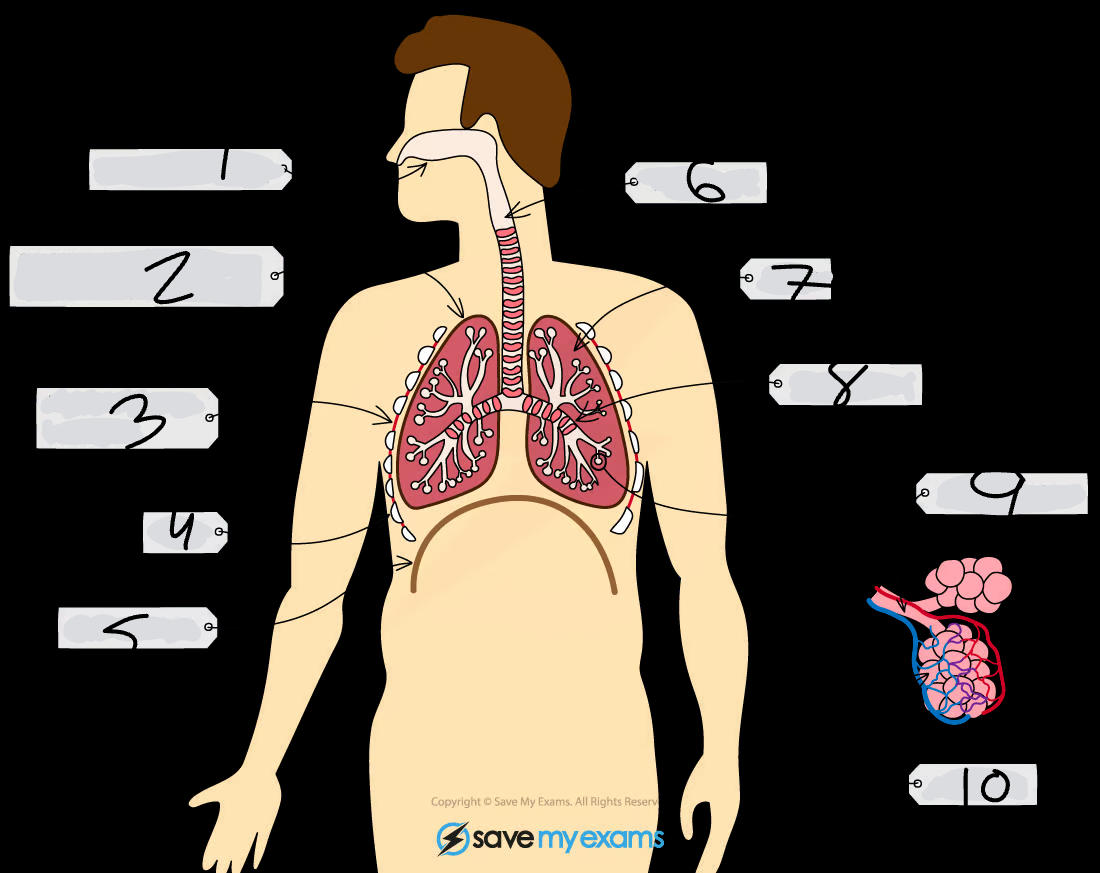
What is 3?
Intercoastal Muscle
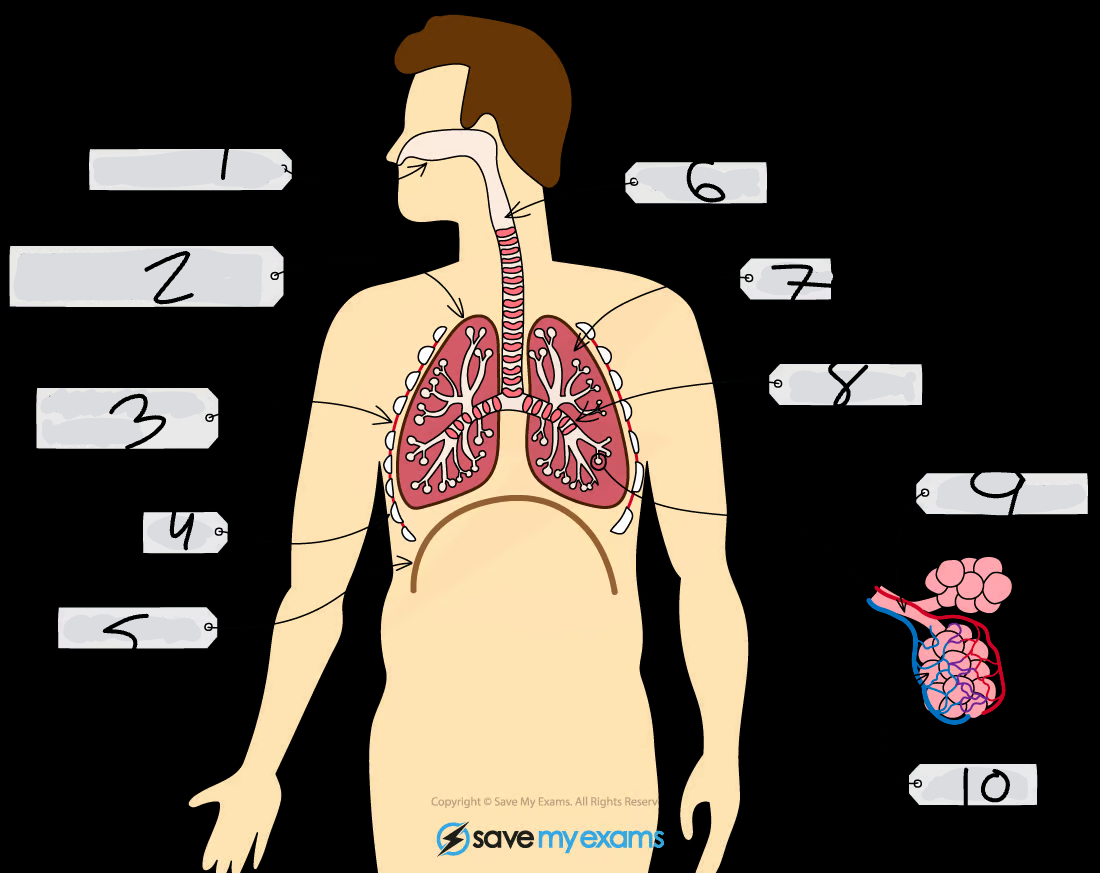
What is 4?
Ribs
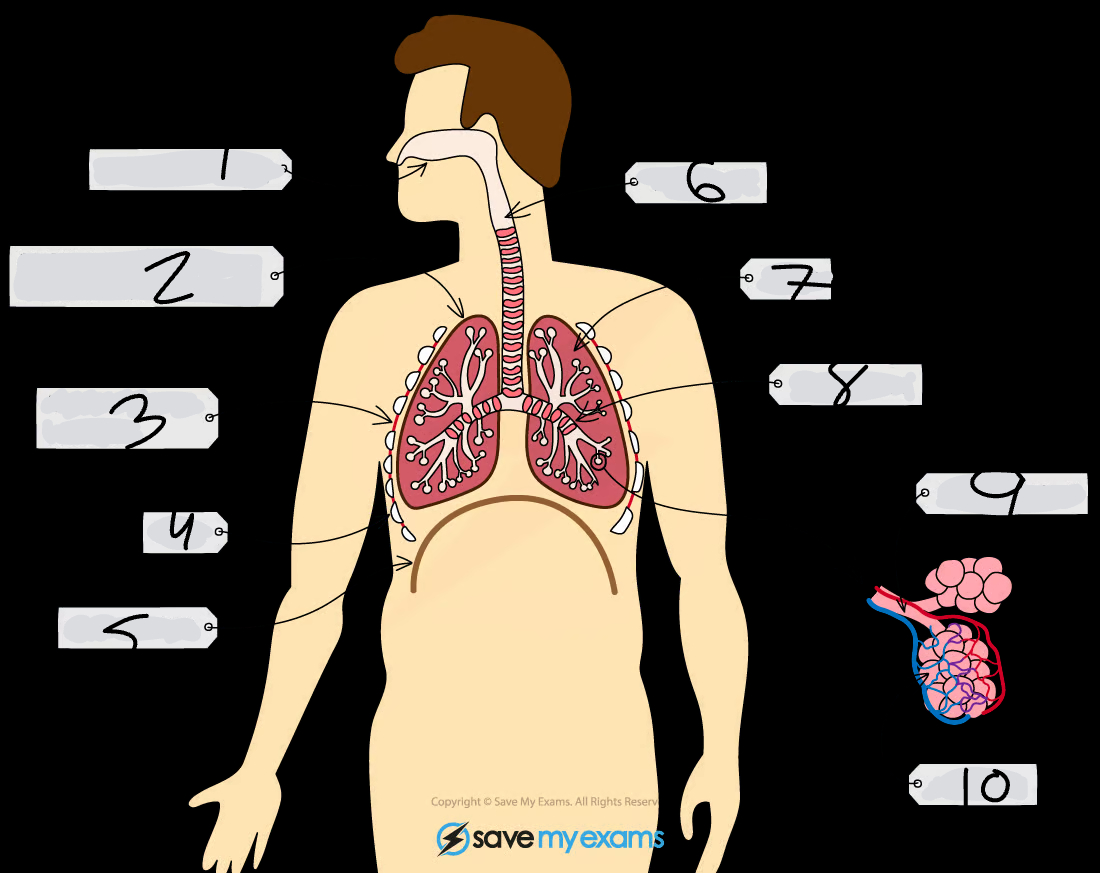
What is 5?
Diaphragm
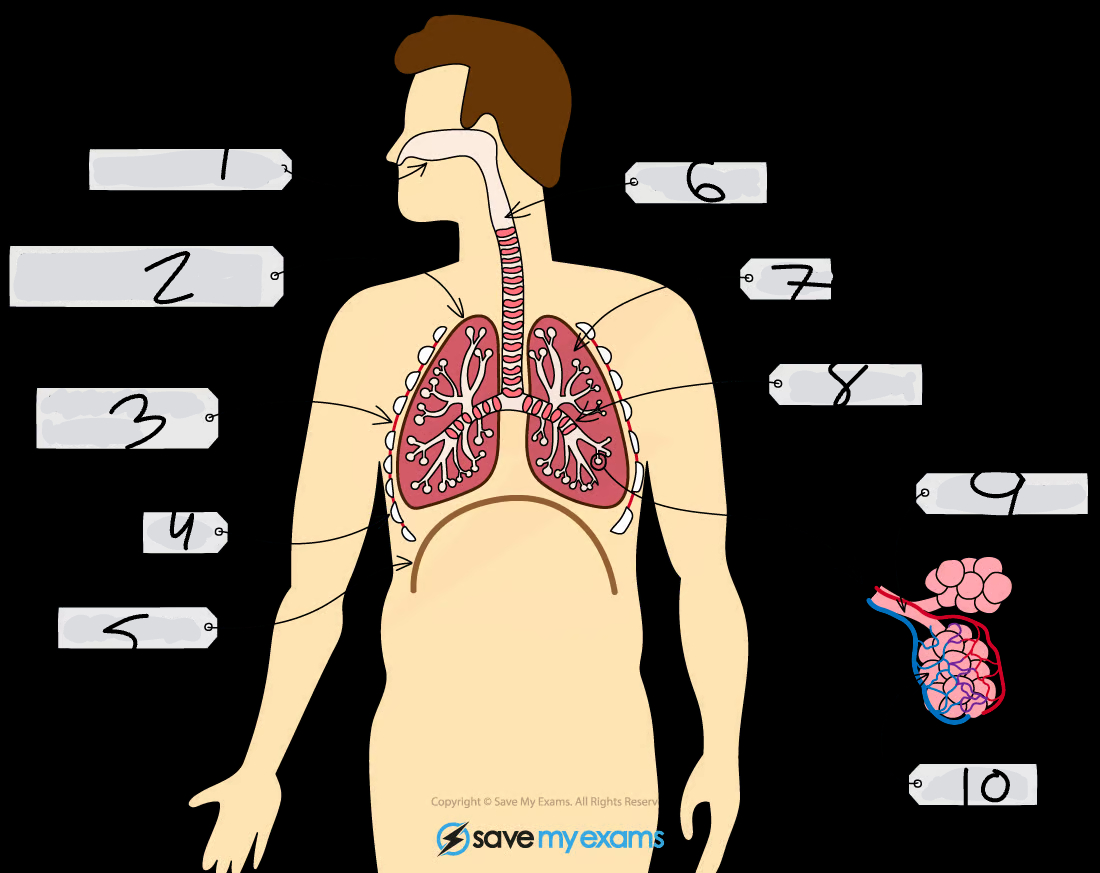
What is 6?
Trachea
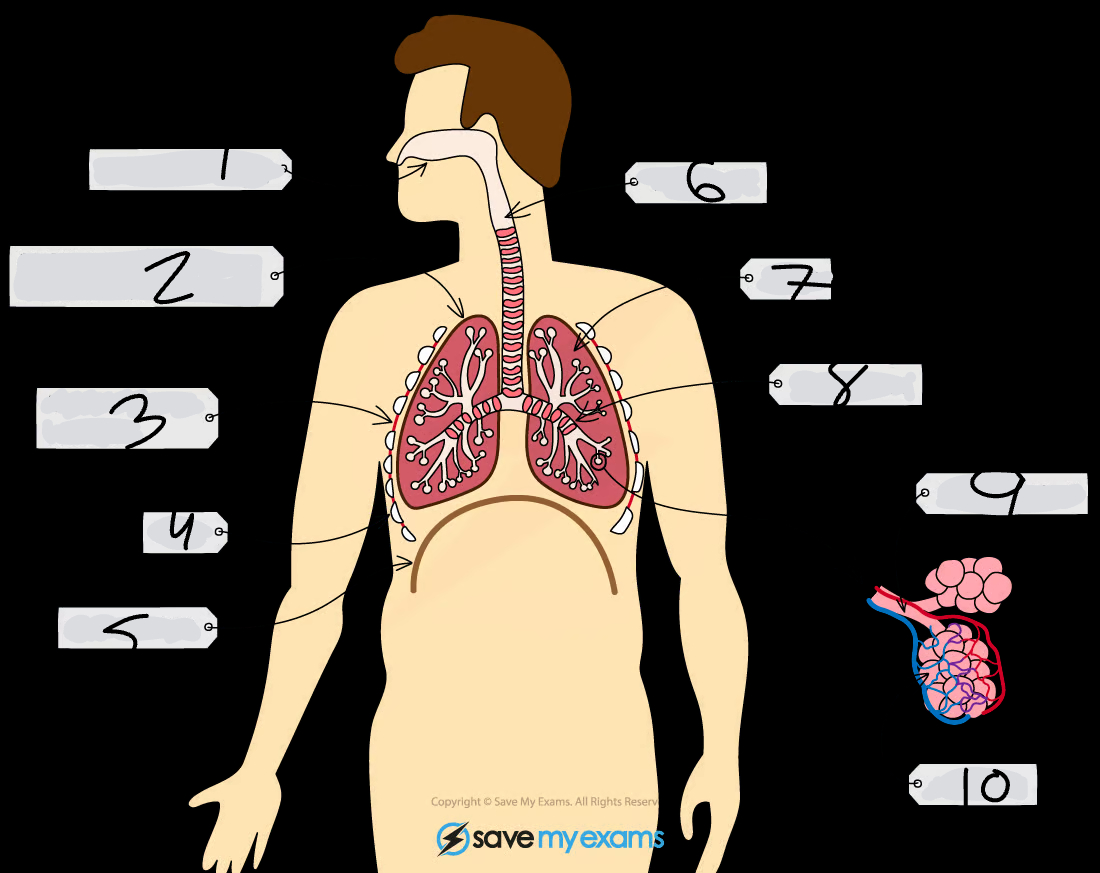
What is 7?
Lungs
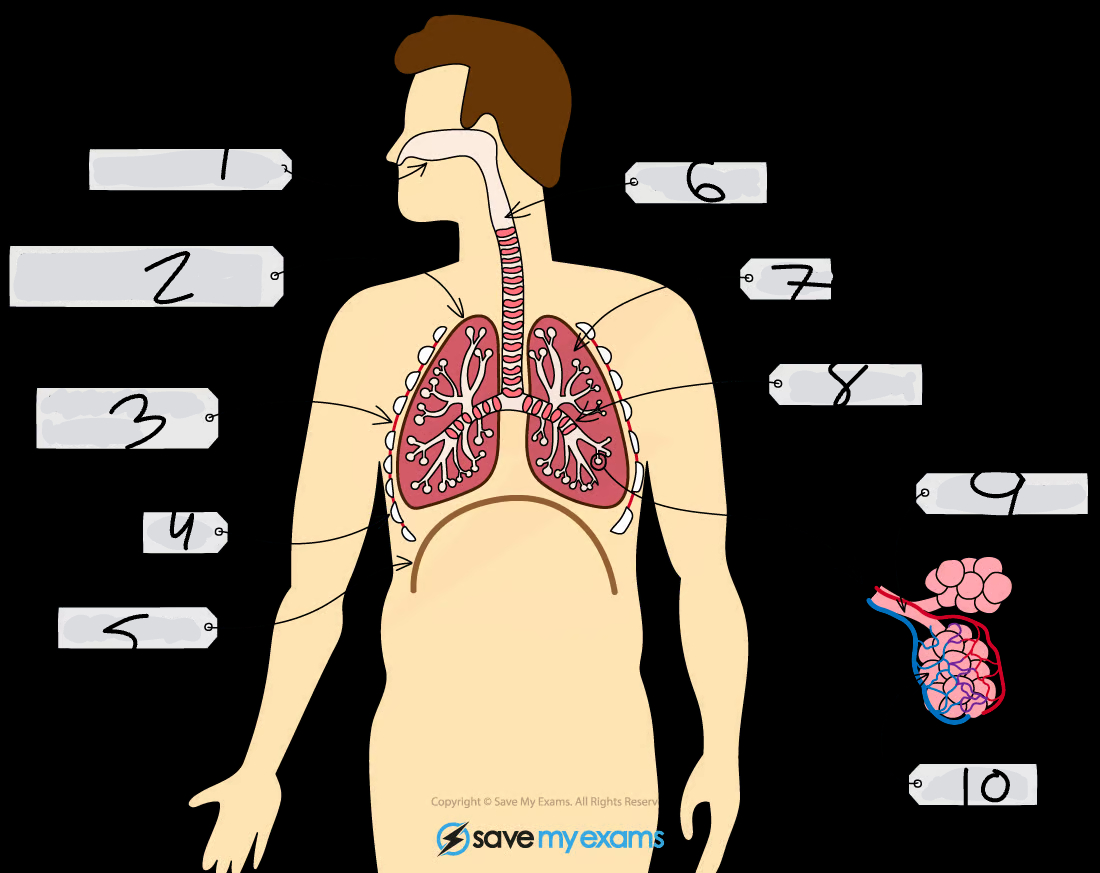
What is 8?
Bronchus
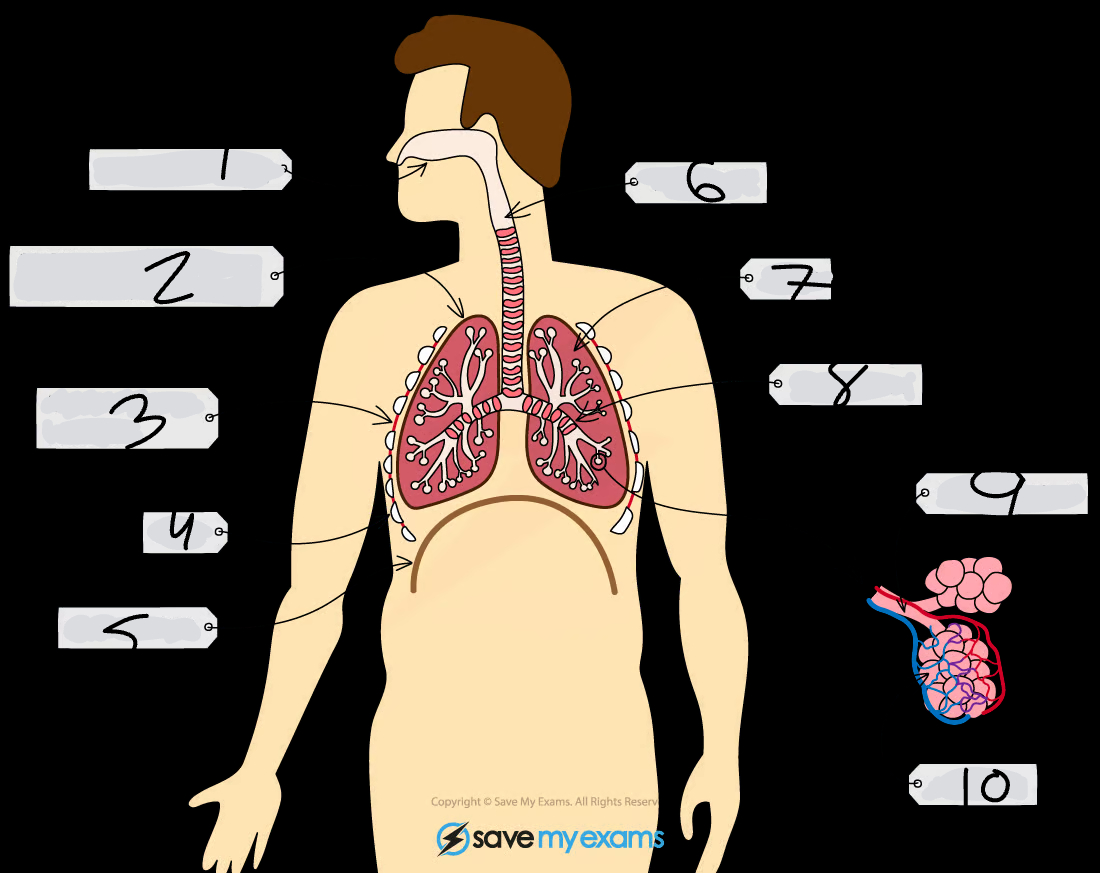
What is 9?
Bronchiole
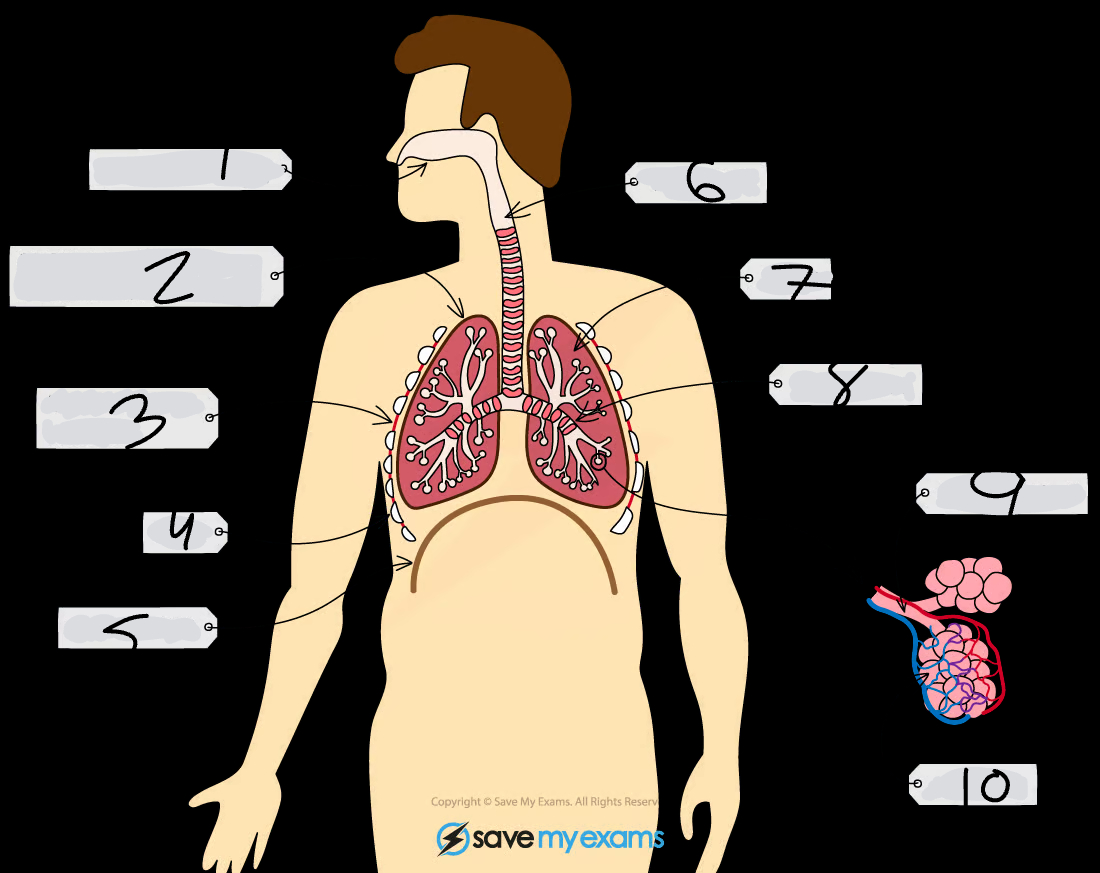
What is 10?
Alveoli
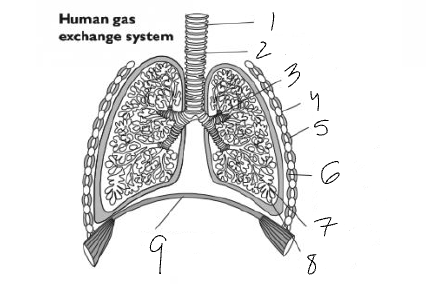
What is 1?
Trachea/Windpipe
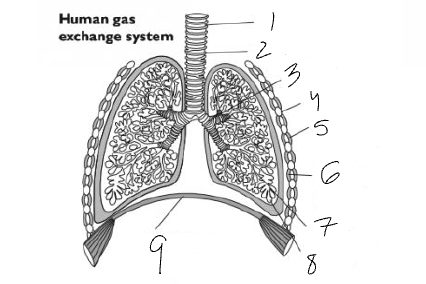
What is 2?
Cartilage
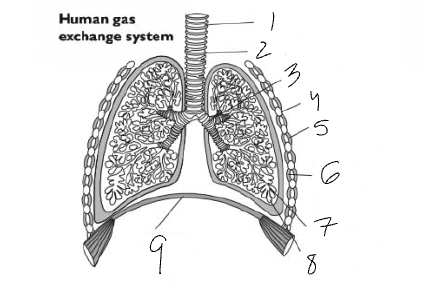
What is 3?
Bronchus
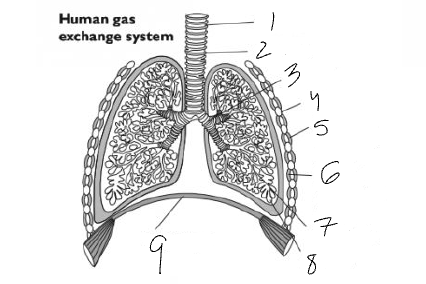
What is 4?
Rib
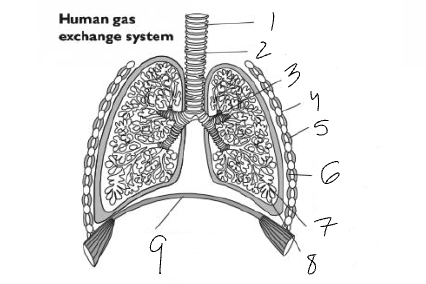
What is 5?
External Intercostal Muscle
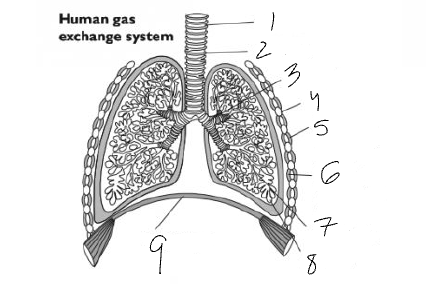
What is 6?
Internal Intercostal Muscle
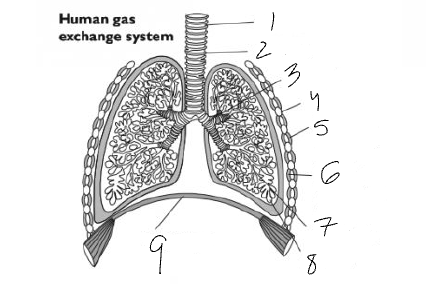
What is 7?
Bronchiole
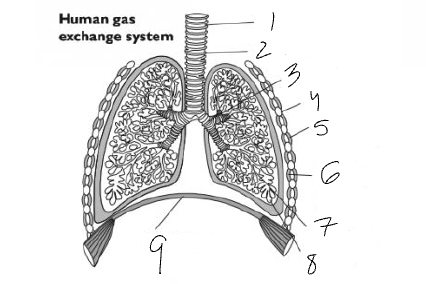
What is 8?
Alveolus
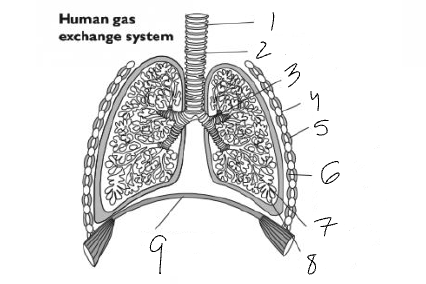
What is 9?
Diaphram
What happens to the ribs, intercoastal muscles and diaphragm when breathing in/inspiration?
Muscles of the diaphragm contract, flattening & pulling downwards to increase the volume of the thorax. External intercostal muscles contract while internal intercostal muscles relax, pulling the rib cage upwards and outwards.
What happens to the ribs, intercostal muscles and diaphragm during breathing out/expiration?
Muscles of the diaphragm relax, springing up to its domed shape to decrease the volume of the thorax. External intercoastal muscles relax while internal intercoastal muscles contract, pulling the rib cage down and inwards.
What are the differences in inspired and expired air?
Inspired air has higher O2 content and lower CO2 content whilst expired air has lower O2 and higher CO2 contents due to the gas exchanges that takes place in the alveoli.
Water vapour is lower in inspired air and higher in expired air due to water evaporating from the moist lining of the alveoli.
What are the effects of physical activity on rate and depth of breathing?
During physical activity, both the rate and depth of breathing increase to take in more oxygen and remove more carbon dioxide.
What is the function of cartilage?
They help prevent the trachea from collapsing when the air pressure inside is lower than the air pressure outside.
How does the ribs, intercostal muscles and diaphragm produce volume and pressure changes in the thorax leading to the ventilation of the lungs?
During inhalation, the external intercostal muscles contract, raising the ribs up and out, and the diaphragm contracts and flattens. This increases the volume of the thorax and decreases the pressure inside it, causing air to move into the lungs.
During exhalation, the external intercostal muscles relax, the ribs move down and in, and the diaphragm becomes dome-shaped. This decreases the volume of the thorax, increases the pressure, and forces air out of the lungs.
How do ciliated cells protect the breathing system from pathogens and particles?
Their hair-like projections (cilia) move together to transport mucus, dust, and bacteria upwards to the back of the throat, where it is either swallowed and destroyed by stomach acid or coughed out, so it doesn’t block the lungs.
How do goblet cells protect the breathing system from pathogens and particles?
They secrete mucus. Mucus in the breathing system traps dust, pathogens, and other harmful particles that are inhaled. It prevents these from reaching the lungs, which could cause infection or damage.
Our cells need energy. What are some of the uses of this energy?
Muscle contraction, protein synthesis, cell division, active transport, growth, transmitting nerve impulses, and maintaining constant body temperature.
What effect does temperature have on the respiration of yeast?
As the temperature increases up to 40 °C, the rate of respiration increases. As temperature increases above 40 °C, the rate of respiration decreases so the time taken for the solution to become colourless increases.
What is Aerobic respiration?
Chemical reactions in the mitochondria, that uses oxygen to break down glucose and other nutrient molecules to release energy for the cell to use.
What is the word equation for aerobic respiration?
Glucose + Oxygen --> Carbon dioxide + Water
What is the chemical equation for aerobic respiration?
C6H12O6 + 6O2 --> 6CO2 + 6H2O
What is anaerobic respiration?
Chemical reactions in the cytoplasm, that breaks down glucose and other nutrient molecules without using oxygen, but less energy is released.
What is the word equation for anaerobic respiration in yeast?
Glucose --> alcohol + carbon dioxide
What is the chemical equation for anaerobic respiration in yeast?
C6H12O6 --> 2C2H5OH + 2CO2
What is the word equation for anaerobic respiration in humans?
Glucose -> lactic acid
When is Lactic acid produced?
It builds up in muscles and blood during vigorous exercise causing oxygen debt because it lowers the pH of blood.
What is oxygen debt?
Extra oxygen that is needed after anaerobic respiration has taken place, in order to break down the lactic acid produced.
How is oxygen debt paid back?
By breathing deeply and quickly after exercise to take in more oxygen. This extra oxygen is used to break down lactic acid inside the liver.
How is physical activity and the rate and depth of breathing linked?
During exercise, muscle cells contract more and require more energy. This increases the rate of respiration, which uses more oxygen and produces more carbon dioxide (CO₂) and lactic acid as a waste product.
The CO₂ and lactic acid produced in the muscle cells diffuses into the blood causing a drop in blood pH. This increase in CO₂ and lactic acid concentration & decrease in pH is detected by receptors in the brain.
These receptors then send nerve impulses to the diaphragm and intercostal muscles, causing them to contract more frequently and more strongly. As a result, the rate and depth of breathing increase.
Which process of respiration releases much less energy per glucose molecule?
Anaerobic Respiration
How is oxygen debt removed after exercise?
The heart rate remains high after exercise to transport lactic acid in the blood from the muscles to the liver.
Breathing remains deep and fast to supply extra oxygen. This oxygen is used to combine with the lactic acid and break it down.
In the liver, lactic acid is oxidised (aerobically respired) into carbon dioxide and water.
What are the differences between inspired & expired air in oxygen?
Inspired air contains about 21% of oxygen. Expired air contains about 16% of oxygen. This decrease happens because oxygen is absorbed into the blood through the alveoli for aerobic respiration.
What are the differences between inspired & expired air in carbon dioxide?
Inspired air contains about 0.04% of carbon dioxide. Expired air contains about 4% of carbon dioxide. This increase is because carbon dioxide is a waste product of respiration and is excreted from the blood into the alveoli.
What are the differences between inspired & expired air in water vapor?
Inspired air has less water vapor (it depends on the environment). Expired air has more water vapor, as moisture is added from the moist lining of the respiratory tract.